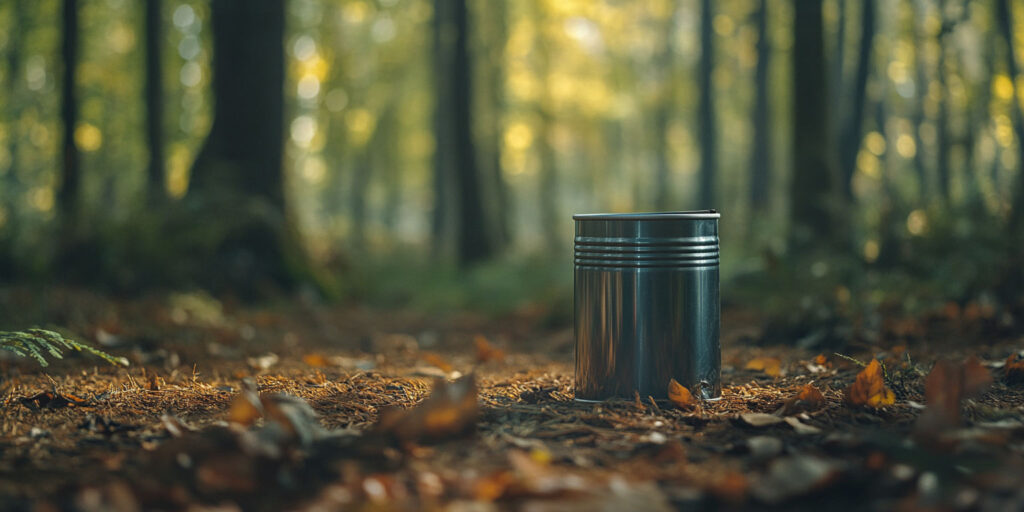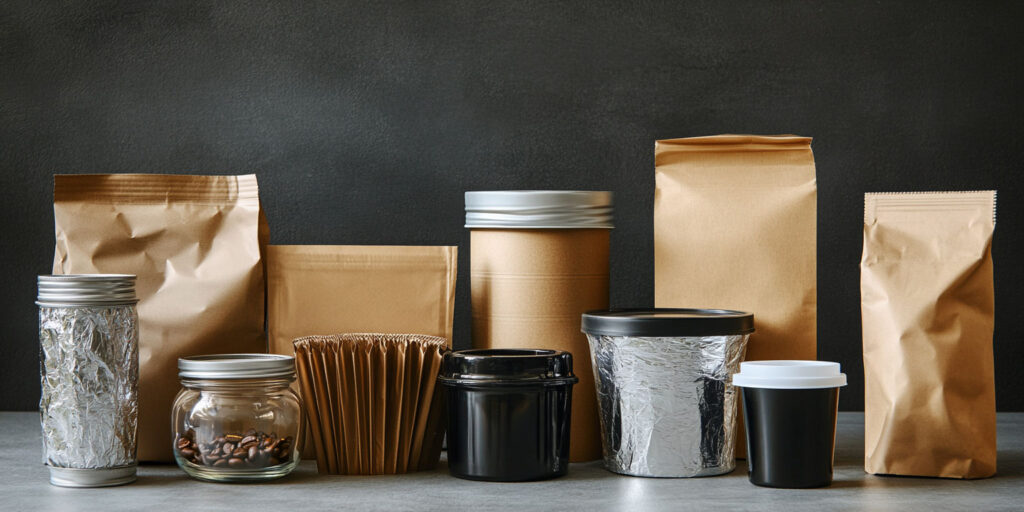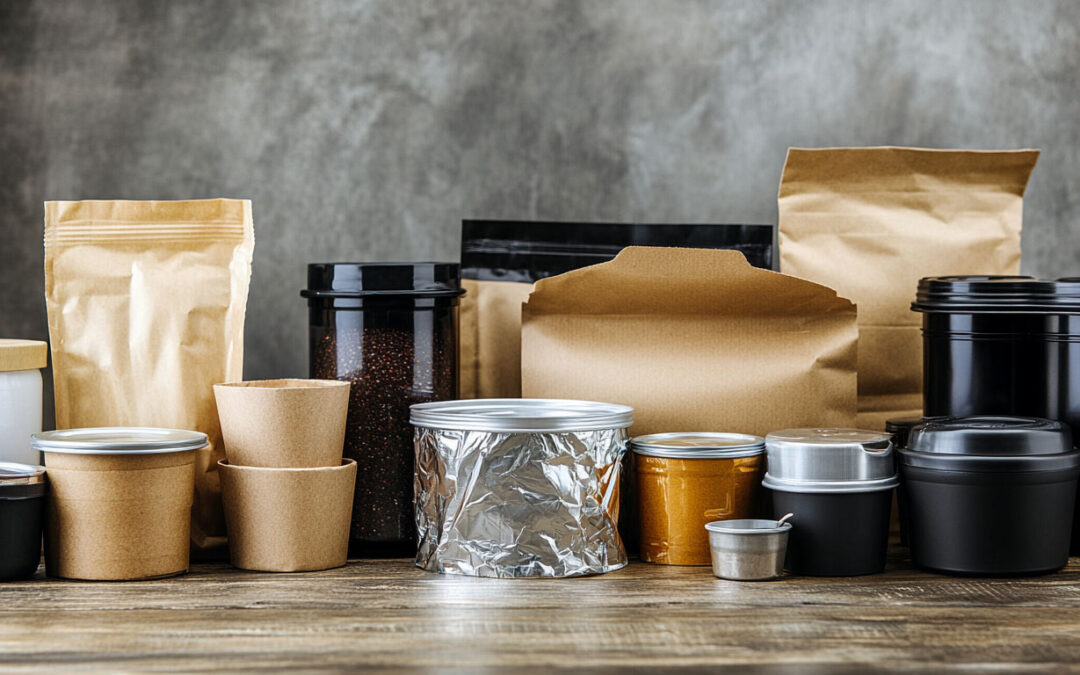Discover the secrets behind keeping your coffee fresher, longer with the ultimate guide to coffee packaging. From the best containers to the impact of light and storage, explore how to protect your beans and enjoy that perfect cup every time.
Coffee packaging plays a crucial role in maintaining the flavor, aroma, and overall quality of your beans. Whether you’re a casual drinker or a dedicated coffee aficionado, understanding the different types of packaging can help you make the best choice for freshness and taste. The best coffee packaging is designed to protect your beans from oxygen, moisture, light, and heat—all of which can diminish the quality of your brew. From traditional bags to advanced metal containers with airtight seals, the right packaging ensures that your coffee stays fresh, aromatic, and delicious.
1. Metal Containers with Airtight Seals
- Ideal for long-term storage
- Prevents air, light, and moisture exposure
- Reusable and durable
2. Vacuum-Sealed Bags
- Commonly used for ground coffee and beans
- Air is removed before sealing to preserve freshness
- Available in single-use and resealable options
3. Foil Bags with Degassing Valves
- Allows gas to escape while preventing air from entering
- Maintains freshness and prevents bags from bursting
- Common in specialty coffee packaging
4. Plastic Containers
- Lightweight and affordable
- Requires airtight seals for effective freshness
- Not as effective as metal or glass for long-term storage
5. Glass Jars
- Excellent for sealing out air and moisture
- Should be stored in a dark place to avoid light exposure
- Reusable and visually appealing
6. Paper Bags with Foil Linings
- Common in retail packaging for freshly roasted beans
- The foil lining adds a barrier against moisture and light
- Often includes a resealable zipper
7. Tin-Tie Paper Bags
- Often used by local roasters for fresh coffee
- Includes a tin-tie for resealing after opening
- Typically used for short-term storage
8. Single-Serve Pods
- Convenient, pre-measured servings of coffee
- Airtight and designed for use in pod coffee makers
- Individually sealed for freshness
9. Stand-Up Pouches
- Flexible packaging often used for coffee beans and ground coffee
- Can include resealable zippers and degassing valves
- Lightweight and cost-effective
10. Biodegradable Bags
- Eco-friendly alternative made from sustainable materials
- May include barriers for moisture and light
- Often used by environmentally-conscious brands
11. Plastic-Lined Paper Bags
- Combines the benefits of paper with added moisture resistance
- Lightweight and often resealable
- Suitable for short-term freshness
12. Cans
- Traditional option for ground coffee
- Sealed to keep air out
- Can be lined with materials to prevent metallic taste
13. Compostable Bags
- Made from materials that break down naturally
- Similar to biodegradable bags, but designed specifically for composting
- Often includes protective linings to maintain freshness
14. Kraft Paper Bags
- Simple, natural look often used by artisanal brands
- Can be lined with materials like foil for added protection
- Best for short-term use
15. Cardboard Tubs with Lids
- Often used for pre-ground coffee
- Provides some protection against light and air
- Convenient for easy scooping
16. Flexible Plastic Film
- Lightweight and cost-effective for bulk packaging
- Used in commercial settings for large quantities
- Typically includes resealable features
When it comes to the best packaging for coffee, metal containers with airtight seals are the gold standard. These containers are specifically designed to prevent air from entering, which is essential for preserving the freshness and flavor of your coffee beans. The airtight seal ensures that no oxygen can spoil your beans, keeping them as fresh as the day they were roasted. These containers are not only durable but also reusable, making them an eco-friendly option for coffee lovers.

Keeping your coffee the freshest requires more than just the right container; you also need to consider the impact of light. Storing coffee in a dark container is crucial for preventing light exposure, which can cause your beans to deteriorate more quickly. Light breaks down the oils in coffee, leading to a stale taste. Dark or opaque containers block out light, keeping your coffee’s quality intact for a longer period.
For those who prefer plastic containers, it’s important to understand that coffee’s freshness in plastic containers may be compromised if not properly sealed. While plastic is convenient, it is not as effective at blocking oxygen as metal or glass containers. However, if plastic is your go-to, make sure to choose containers that are specifically designed for coffee storage, with airtight seals to minimize exposure to air.
How long does coffee stay fresh in a plastic container?
It depends on several factors, including the quality of the plastic, the seal, and the storage conditions. Generally, coffee stored in a well-sealed plastic container can stay fresh for up to two weeks. However, for optimal freshness, it’s recommended to transfer coffee to a metal or glass container with an airtight seal as soon as possible.
By choosing the right coffee packaging, you can enjoy the freshest, most flavorful coffee every time you brew. Whether you opt for a metal container with an airtight seal or a dark, light-blocking jar, understanding the role of packaging in coffee storage is key to maintaining that perfect cup of coffee.Here’s a comprehensive list of the various types of coffee packaging options available:
Coffee Packaging Checklist:
- Metal Containers with Airtight Seals: Best for long-term freshness.
- Dark or Opaque Containers: Essential for blocking light and preserving flavor.
- Plastic Containers: Suitable for short-term storage, up to two weeks.
- Vacuum-Sealed Bags: Great for preserving freshness before opening.

These packaging types offer a range of options depending on your storage needs, environmental concerns, and desired freshness for your coffee.

